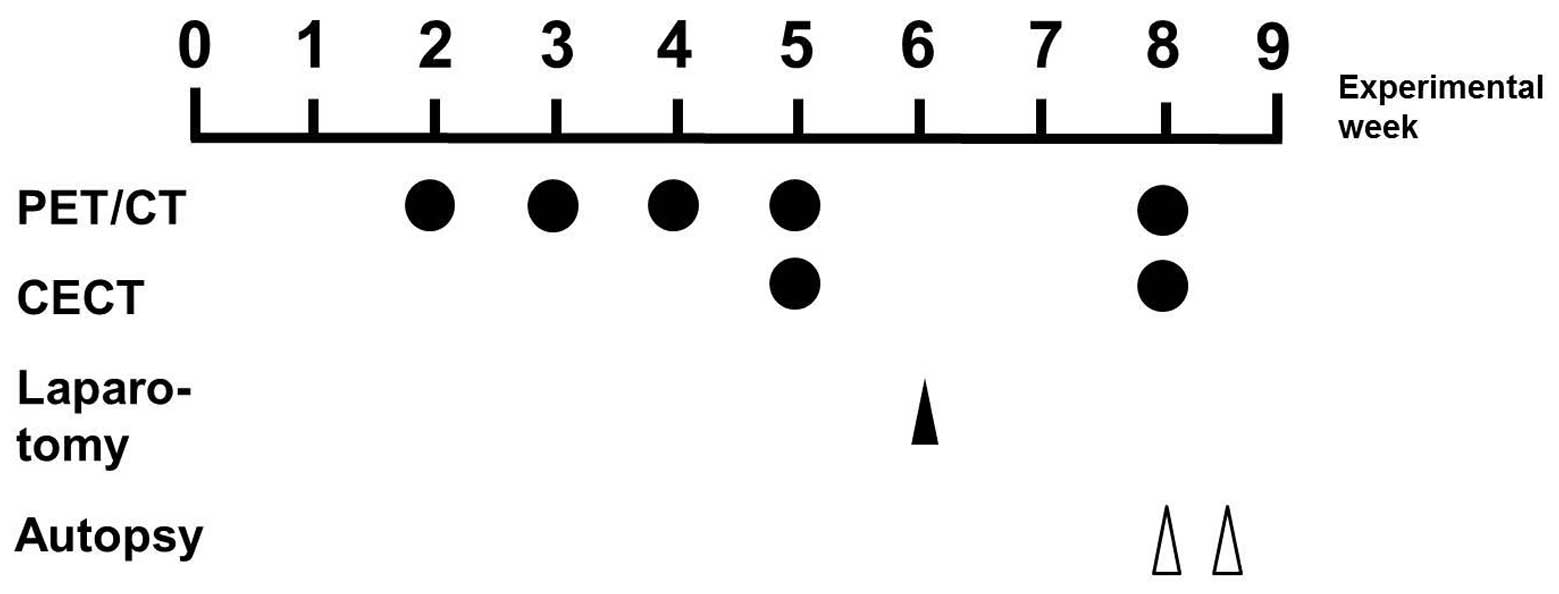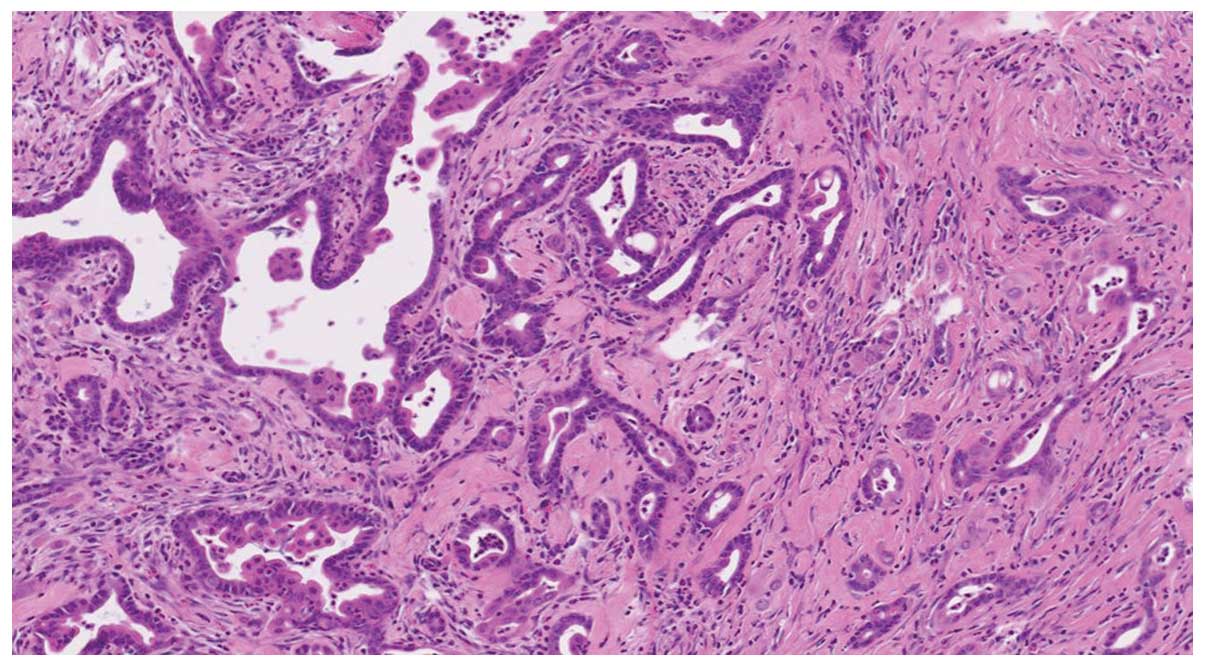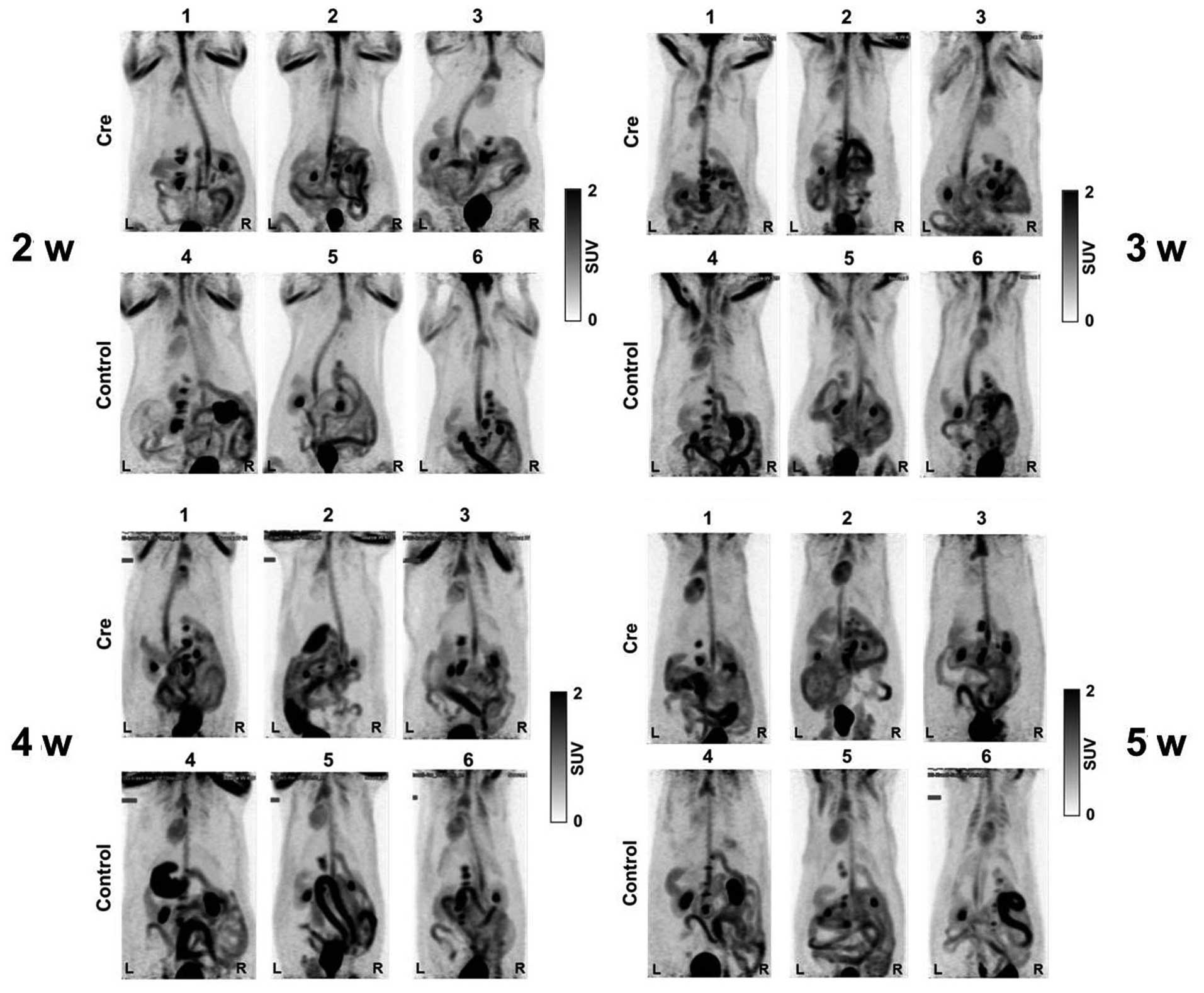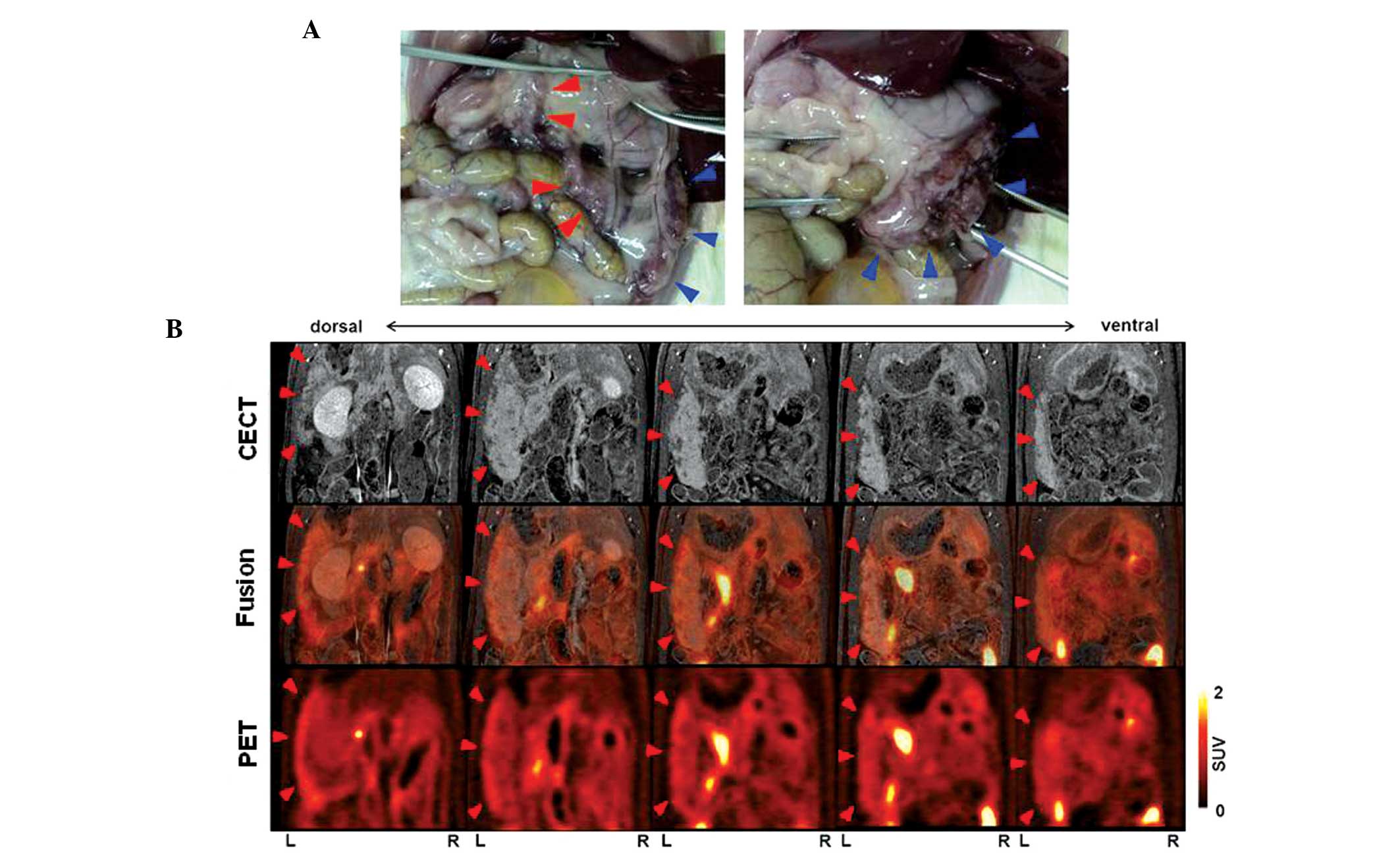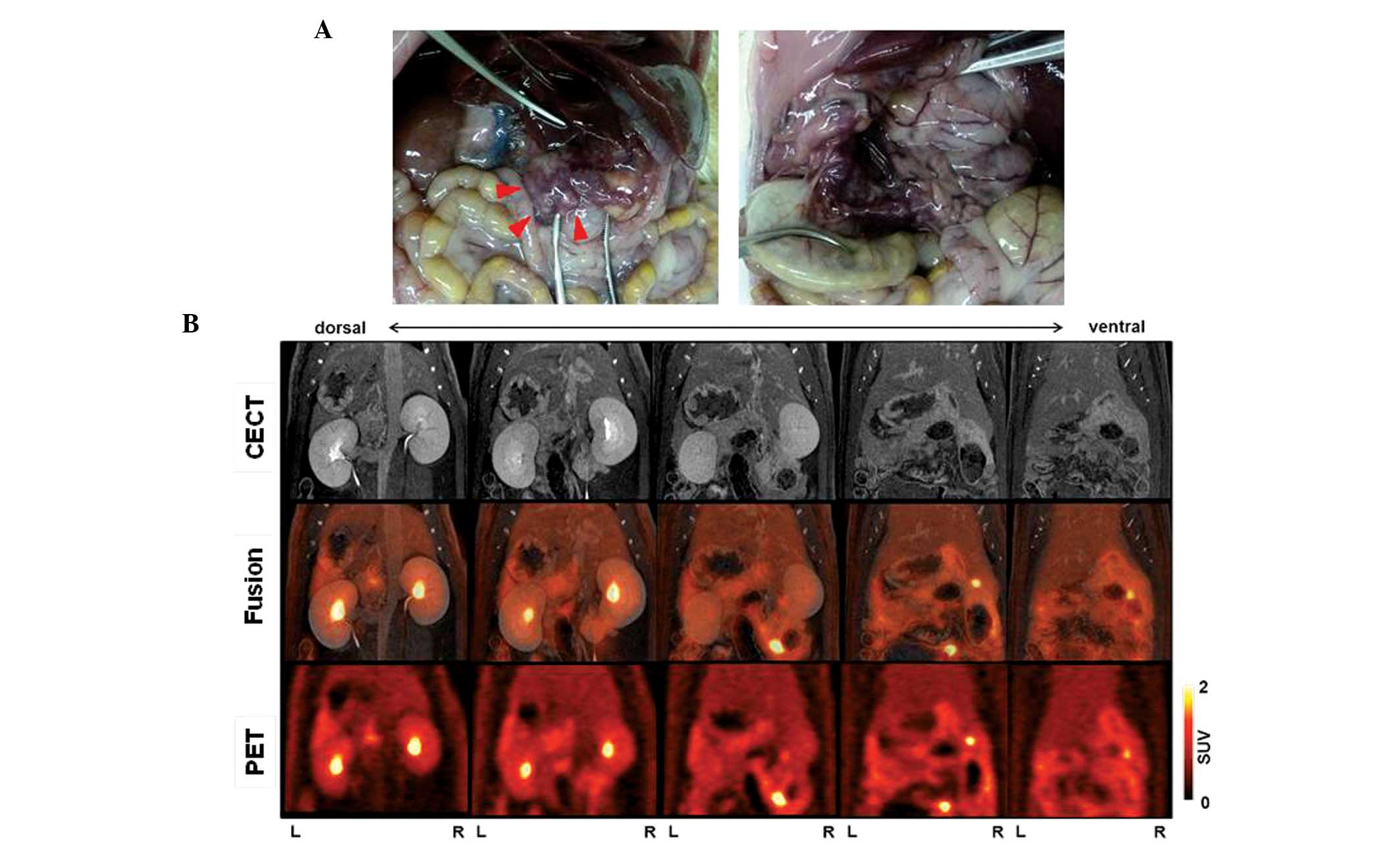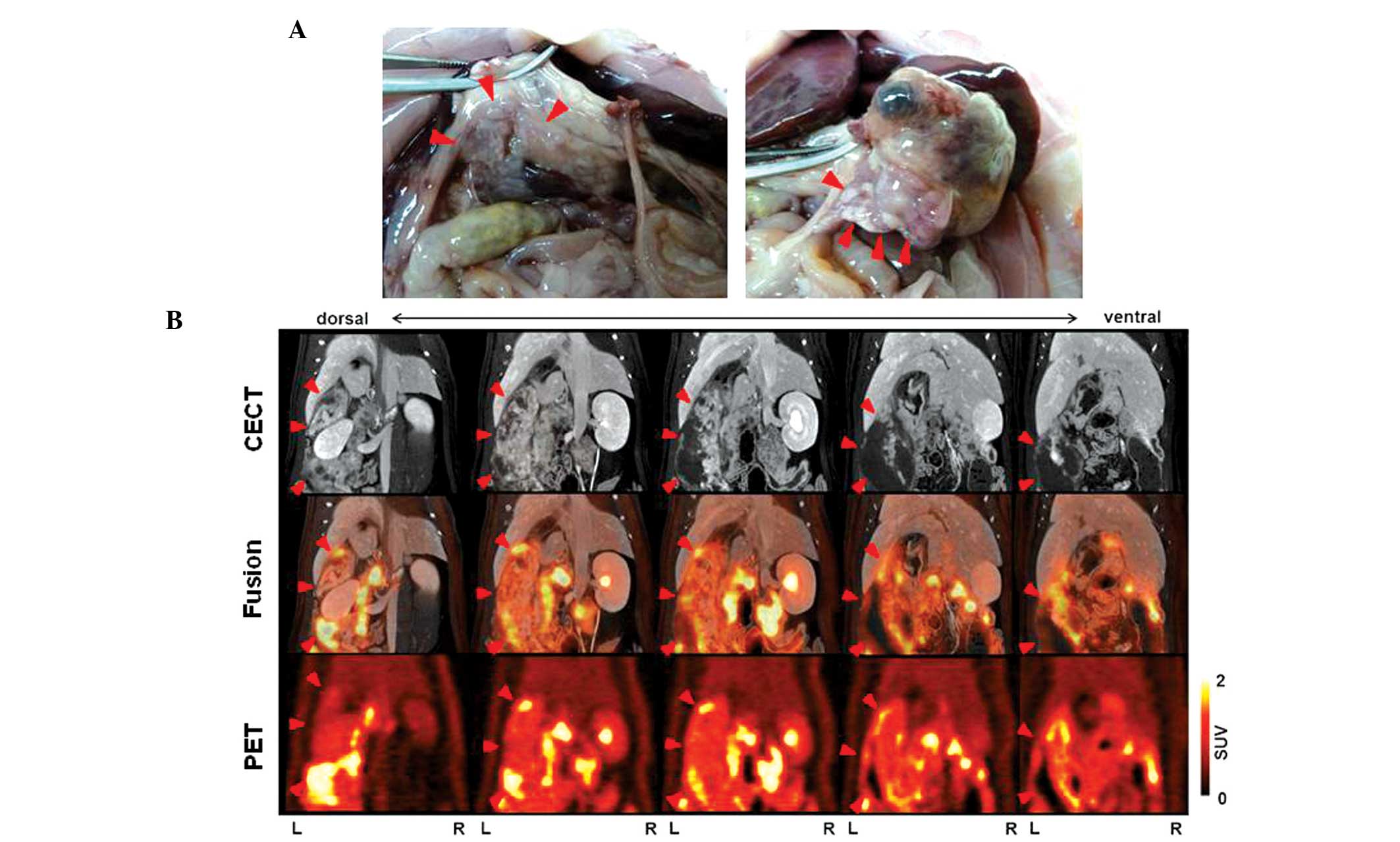|
1
|
Ferlay J, Shin HR, Bray F, Forman D,
Mathers C and Parkin DM: Estimates of worldwide burden of cancer
in: GLOBOCAN 2008. Int J Cancer. 127:2893–2917. 2010. View Article : Google Scholar : PubMed/NCBI
|
|
2
|
Matsuda A, Matsuda T, Shibata A, Katanoda
K, Sobue T and Nishimoto H: Japan Cancer Surveillance Research
Group: Cancer incidence and incidence rates in Japan in 2007: a
study of 21 population-based cancer registries for the Monitoring
of Cancer Incidence in Japan (MCIJ) project. Jpn J Clin Oncol.
43:328–336. 2013. View Article : Google Scholar : PubMed/NCBI
|
|
3
|
Bosetti C, Bertuccio P, Negri E, La
Vecchia C, Zeegers MP and Boffetta P: Pancreatic cancer: overview
of descriptive epidemiology. Mol Carcinog. 51:3–13. 2012.
View Article : Google Scholar : PubMed/NCBI
|
|
4
|
Cubilla AL and Fitzgerald PJ: Cancer of
the exocrine pancreas: the pathologic aspects. CA Cancer J Clin.
35:2–18. 1985. View Article : Google Scholar : PubMed/NCBI
|
|
5
|
Morohoshi T, Held G and Klöppel G:
Exocrine pancreatic tumours and their histological classification.
A study based on 167 autopsy and 97 surgical cases. Histopathology.
7:645–661. 1983. View Article : Google Scholar : PubMed/NCBI
|
|
6
|
Wolfgang CL, Herman JM, Laheru DA, et al:
Recent progress in pancreatic cancer. CA Cancer J Clin. 63:318–348.
2013. View Article : Google Scholar : PubMed/NCBI
|
|
7
|
Siegel R, Naishadham D and Jemal A: Cancer
statistics. CA Cancer J Clin. 63:11–30. 2013. View Article : Google Scholar : PubMed/NCBI
|
|
8
|
Fukamachi K, Tanaka H, Hagiwara Y, et al:
An animal model of preclinical diagnosis of pancreatic ductal
adenocarcinomas. Biochem Biophys Res Commun. 390:636–641. 2009.
View Article : Google Scholar : PubMed/NCBI
|
|
9
|
Ueda S, Fukamachi K, Matsuoka Y, et al:
Ductal origin of pancreatic adenocarcinomas induced by conditional
activation of a human Ha-ras oncogene in rat pancreas.
Carcinogenesis. 27:2497–2510. 2006. View Article : Google Scholar : PubMed/NCBI
|
|
10
|
Yabushita S, Fukamachi K, Tanaka H, et al:
Metabolomic and transcriptomic profiling of human K-ras oncogene
transgenic rats with pancreatic ductal adenocarcinomas.
Carcinogenesis. 34:1251–1259. 2013. View Article : Google Scholar : PubMed/NCBI
|
|
11
|
Yabushita S, Fukamachi K, Kikuchi F, et
al: Twenty-one proteins up-regulated in human H-ras oncogene
transgenic rat pancreas cancers are up-regulated in human pancreas
cancer. Pancreas. 42:1034–1039. 2013. View Article : Google Scholar : PubMed/NCBI
|
|
12
|
Yabushita S, Fukamachi K, Tanaka H, et al:
Circulating microRNAs in serum of human K-ras oncogene transgenic
rats with pancreatic ductal adenocarcinomas. Pancreas.
41:1013–1018. 2012. View Article : Google Scholar : PubMed/NCBI
|
|
13
|
Asagi A, Ohta K, Nasu J, et al: Utility of
contrast-enhanced FDG-PET/CT in the clinical management of
pancreatic cancer: impact on diagnosis, staging, evaluation of
treatment response, and detection of recurrence. Pancreas.
42:11–19. 2013. View Article : Google Scholar : PubMed/NCBI
|
|
14
|
Tomimaru Y, Takeda Y, Tatsumi M, et al:
Utility of 2-[18F] fluoro-2-deoxy-D-glucose positron emission
tomography in differential diagnosis of benign and malignant
intraductal papillary-mucinous neoplasm of the pancreas. Oncol Rep.
24:613–620. 2010.PubMed/NCBI
|
|
15
|
Lan BY, Kwee SA and Wong LL: Positron
emission tomography in hepatobiliary and pancreatic malignancies: a
review. Am J Surg. 204:232–241. 2012. View Article : Google Scholar : PubMed/NCBI
|
|
16
|
Studwell AJ and Kotton DN: A shift from
cell cultures to creatures: in vivo imaging of small animals in
experimental regenerative medicine. Mol Ther. 19:1933–1941. 2011.
View Article : Google Scholar : PubMed/NCBI
|
|
17
|
Kanegae Y, Lee G, Sato Y, et al: Efficient
gene activation in mammalian cells by using recombinant adenovirus
expressing site-specific Cre recombinase. Nucleic Acids Res.
23:3816–3821. 1995. View Article : Google Scholar : PubMed/NCBI
|
|
18
|
Fendrich V, Schneider R, Maitra A,
Jacobsen ID, Opfermann T and Bartsch DK: Detection of precursor
lesions of pancreatic adenocarcinoma in PET-CT in a genetically
engineered mouse model of pancreatic cancer. Neoplasia. 13:180–186.
2011. View Article : Google Scholar : PubMed/NCBI
|
|
19
|
van Kouwen MC, Laverman P, van Krieken JH,
Oyen WJ, Jansen JB and Drenth JP: FDG-PET in the detection of early
pancreatic cancer in a BOP hamster model. Nucl Med Biol.
32:445–450. 2005. View Article : Google Scholar : PubMed/NCBI
|
|
20
|
Russell WMS and Burch RL: The Principles
of Humane Experimental Technique2nd. Methuen & Co; London:
1992
|
|
21
|
Kitahashi T, Mutoh M, Tsurusaki M, et al:
Imaging study of pancreatic ductal adenocarcinomas in Syrian
hamsters using X-ray micro-computed tomography (CT). Cancer Sci.
101:1761–1766. 2010. View Article : Google Scholar : PubMed/NCBI
|
|
22
|
Kayed H, Meyer P, He Y, et al: Evaluation
of the metabolic response to cyclopamine therapy in pancreatic
cancer xenografts using a clinical PET-CT system. Transl Oncol.
5:335–343. 2012. View Article : Google Scholar : PubMed/NCBI
|
|
23
|
Sakai T, Tsushima T, Kimura D, Hatanaka R,
Yamada Y and Fukuda I: A clinical study of the prognostic factors
for postoperative early recurrence in patients who underwent
complete resection for pulmonary adenocarcinoma. Ann Thorac
Cardiovasc Surg. 17:539–543. 2011. View Article : Google Scholar : PubMed/NCBI
|



